Unsure about your French table manners? Click Here to download > > How to avoid these 10 food etiquette mistakes !
- Home ›
- Destinations ›
- France Less Visited ›
- Maison Picassiette in Chartres
La Maison Picassiette in Chartres: The House of a Million Pieces
Published 12 May 2024 by Leyla Alyanak — Parisian by birth, Lyonnaise by adoption, historian by passion
France is more than beautiful villages and great wine – it is also a country of individuality and whimsy. La Maison Picassiette in Chartres, in the Eure-et-Loir department, is one example of this whimsy, a house made of millions of pieces of broken mosaic over the lifetime of a single, self-taught man. This is his story.
If you happened to walk by the Picassiette mosaic house accidentally, you’d do a double take and retrace your steps.
Mosaics all over the walls? And broken glass? Does someone actually live here?
Not anymore, but this was a family home for years.
Ever since I first saw a photograph of this unusual house, I had wanted to visit it, so when I was in Chartres recently, I finally did.
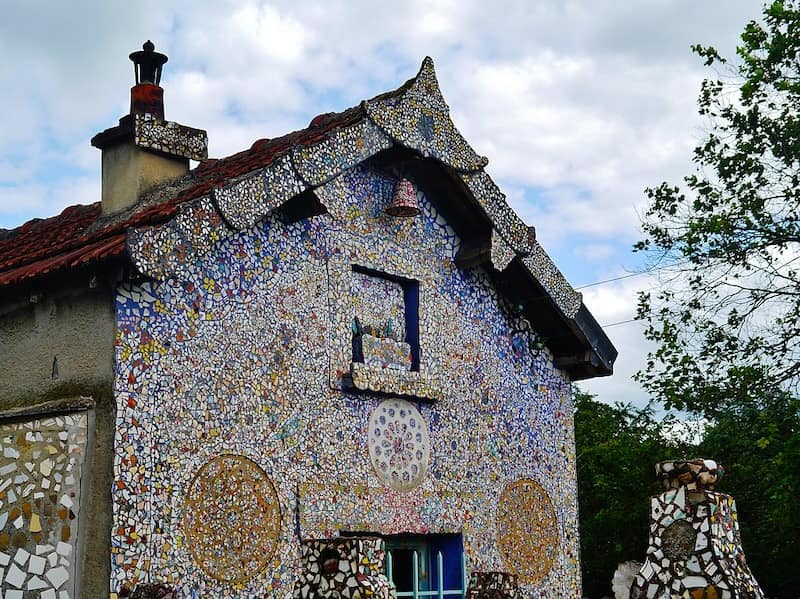 This was the type of photo that lodged in my mind. Photo:
Zairon, CC BY-SA 4.0, via Wikimedia Commons
This was the type of photo that lodged in my mind. Photo:
Zairon, CC BY-SA 4.0, via Wikimedia CommonsNOTE: Pages on this site may contain affiliate links, which support this site. See full Privacy Policy here.
On the surface, Raymond Isidore was a modest, ordinary man, and nothing could have foretold he would become an accomplished creator, famous well beyond his native city of Chartres.
One day, he found a broken piece of pottery and brought it home. And he kept finding more, until one day he decided to decorate his house with them.
The surprising story of Raymond Isidore
Raymond Isidore was born in 1900, the seventh of eight children in an extremely modest family. His schooling was basic, and he was blind as a child, healed after a miraculous visit to the Chartres Cathedral, an event that would strengthen his faith and play a role in his art later in life.
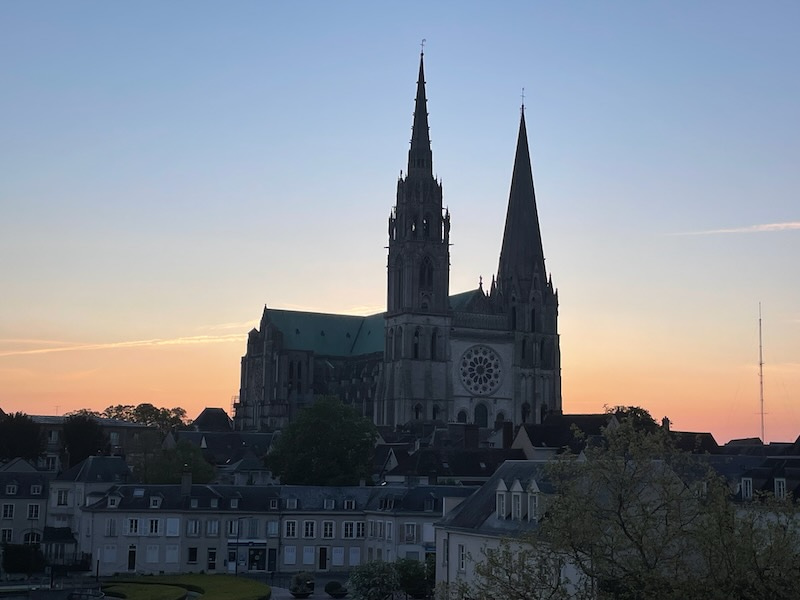 Chartres Cathedral, at sunrise ©OffbeatFrance/Leyla Alyanak
Chartres Cathedral, at sunrise ©OffbeatFrance/Leyla AlyanakHe had little schooling and changed jobs often, but his life shifted in 1924 when he met and married Adrienne Doucet, a widow 11 years his senior with with three children of her own.
They lived in a small apartment and would soon take advantage of low-cost government loans and buy a small plot of land to build a house (in what was once rural and is now a modern urban street).
Raymond decided to forgo the help of the architect provided by the government and build his house himself, with the help of his two stepsons, possibly a harbinger of the artistic prowess to come. By 1931, the family was ready to move into its three rooms: a kitchen and dining room, a small living room, and a bedroom.
It was all a little bland and undecorated, boring even, and so it would stay until 1938, when, in Raymond's own words:
“I first built the house for shelter. But once it was built, I found small bits of glass or porcelain as I walked in the fields and I picked them up, for no reason other than their colors and shine. I kept the good ones and threw the others away. I piled them up in a corner of the garden. And then I thought of turning them into a mosaic to decorate the house. At first I only thought of doing the walls.”
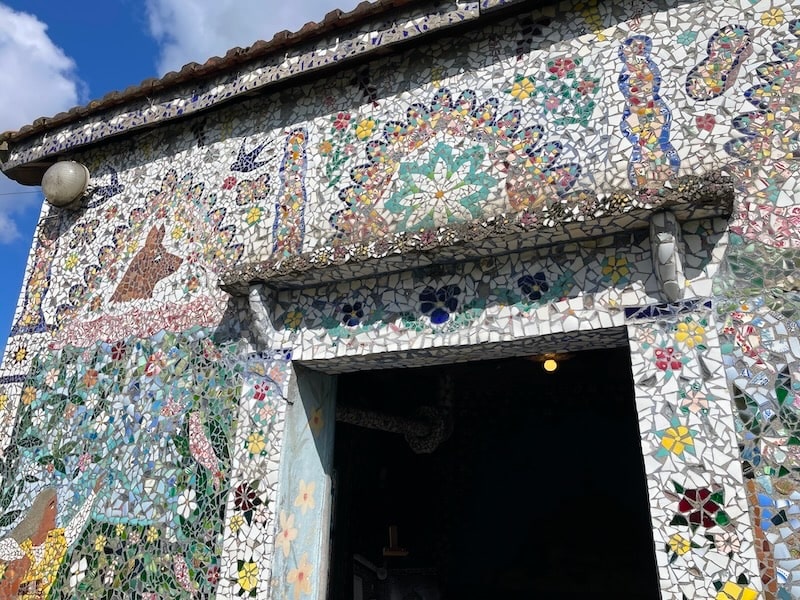 The walls of the Maison Picassiette ©OffbeatFrance/Leyla Alyanak
The walls of the Maison Picassiette ©OffbeatFrance/Leyla AlyanakWith World War II around the corner, he preferred to stay discreet and focused on the interior, which he began to cover with broken bits of glass and ceramic, even tile, held in place with cement.
Assigned to a coal warehouse during the war, he developed mental health problems and was interned in a psychiatric hospital for a while. Once back home, he took a job as a graveyard sweeper in the cemetery next door, not a particularly rewarding position but one that would allow him to continue building his masterpiece at night.
When he ran out of shards, he asked his friends to provide him with broken dinnerware and when those ran out, he began buying plates and glasses, breaking them for his use. Into the night he worked, by lamplight, until his house was carpeted with mosaics, prompting him to buy adjacent plots of land. He would decorate these too, with mosaics or frescoes.
WHAT DOES PICASSIETTE MEAN?
It's a play on words. In French, a pique-assiette is a mooch, someone who gets himself invited without reciprocating or offering to pay his (or her) share. Perhaps a reference to picking up pieces of plates for free? Combine this with a hint of Picasso, and you have Picassiette.
While he never knew fortune, he would certainly know fame during his lifetime. The media eventually wrote about his house and the word spread, with visitors traveling to explore this unusual structure. Even Pablo Picasso came, as did the photographer Robert Doisneau, who immortalized Isidore and whose visit would be celebrated with an exhibition exactly 50 years after that visit.
Isidore would be fond of these visits and would show off his house with pride, but his health deteriorated and his mental health issues returned until he was interned again. One day, in a storm, he was found wandering and died shortly thereafter, just shy of his 65th birthday.
His house, classified as a national monument, is a major attraction in Chartres, with 30,000 visits a year. Some come to visit as a curiosity, but many are fascinated by the Art Brut, or outsider art it represents, created by an artist with no artistic background or training, and the fruit of his imagination, much like the Postman Cheval’s Ideal House further south in the Drôme Provençale.
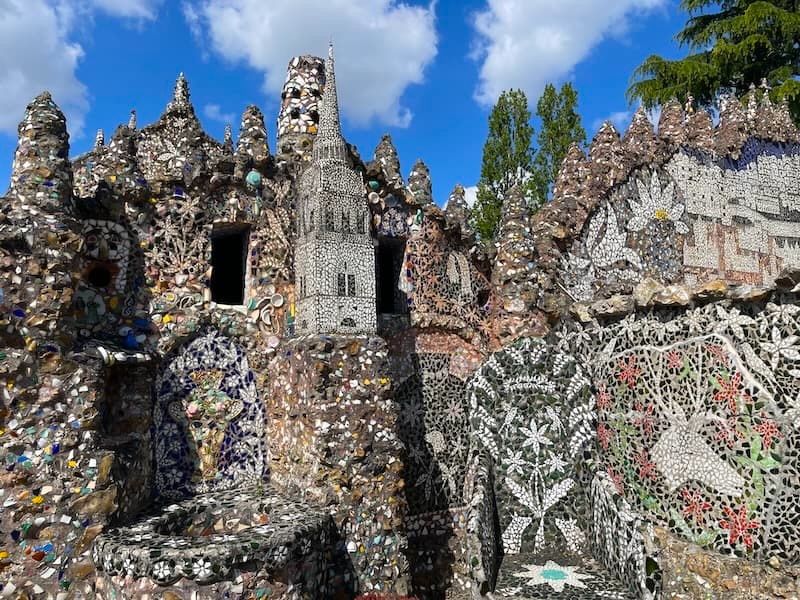 More outside wall decorations of the Maison Picassiette ©OffbeatFrance/Leyla Alyanak
More outside wall decorations of the Maison Picassiette ©OffbeatFrance/Leyla AlyanakMaison Picassiette: follow me!
A peek into the small house reveals plenty of surprises.
First, as expected in a modest three-room home, the rooms themselves are small, with little space to move around.
Most striking is that everything is covered in mosaic: walls, ceilings, furniture, even his wife’s sewing machine, all in bright colors, begging you to stop and explore.
She is quoted as having said, “I’ll have to be careful or next thing you know you’ll be covering me in mosaics too!”
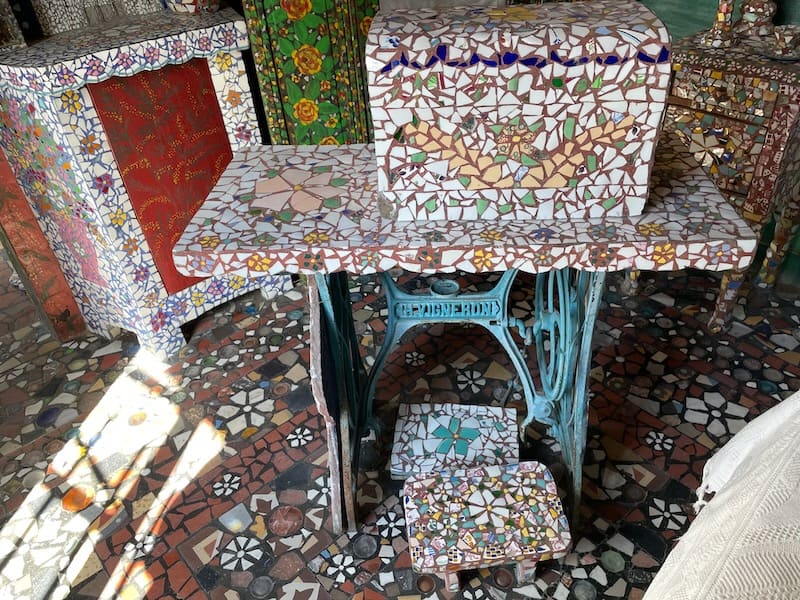 Isidore left nothing undecorated, not even his wife's sewing machine! ©OffbeatFrance/Leyla Alyanak
Isidore left nothing undecorated, not even his wife's sewing machine! ©OffbeatFrance/Leyla AlyanakNot surprisingly, many of the motifs reveal a deeply religious man, with emphasis on the Chartres Cathedral, scene of his healing.
This is a man who never traveled, except for one trip to Paris, his military service, and his honeymoon on Mont Saint-Michel.
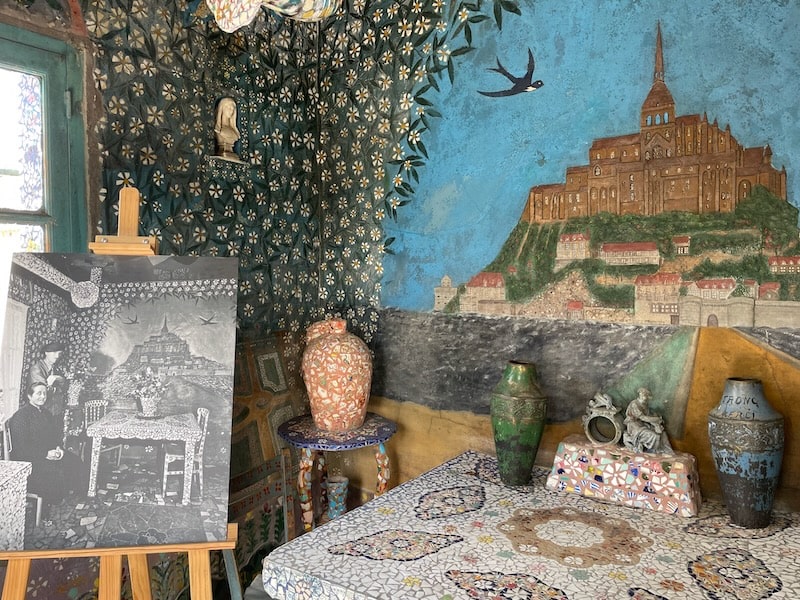 Easel on the left portrays Raymond Isidore and his wife Adrienne; on the right is a mural of the Mont Saint-Michel ©OffbeatFrance/Leyla Alyanak
Easel on the left portrays Raymond Isidore and his wife Adrienne; on the right is a mural of the Mont Saint-Michel ©OffbeatFrance/Leyla AlyanakYet if you look at the walls of his house, they are covered with exotic scenes of faraway places, whose likenesses he would only have seen second hand.
He was keen on contrasts, pitting a woman from Brittany on one wall facing a woman from Palestine, one in the light, the other in the shadows.
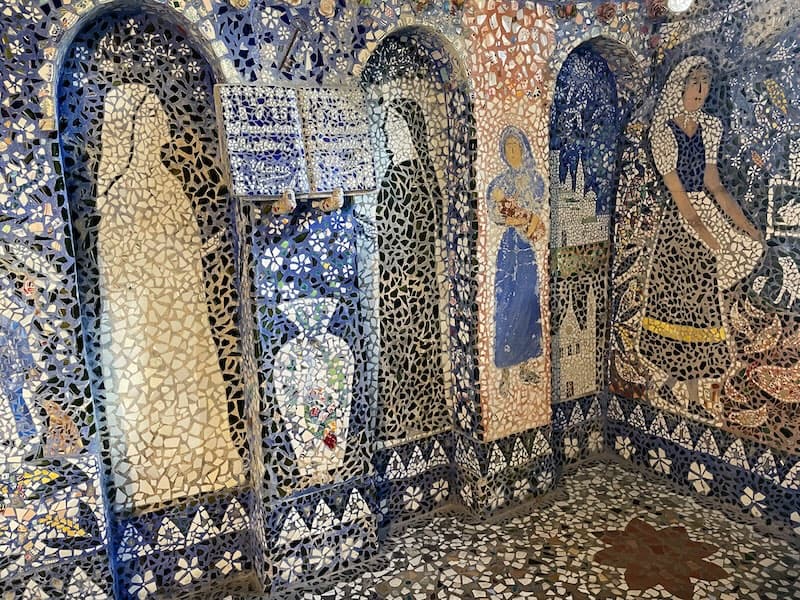 Two women, face to face, in the Maison Picassiette ©OffbeatFrance/Leyla Alyanak
Two women, face to face, in the Maison Picassiette ©OffbeatFrance/Leyla AlyanakOnce he ran out of space inside, he went outside. And started all over again. He built a chapel, whose blues hinted of heaven and, in case we had forgotten, reminded us of his deep spirituality.
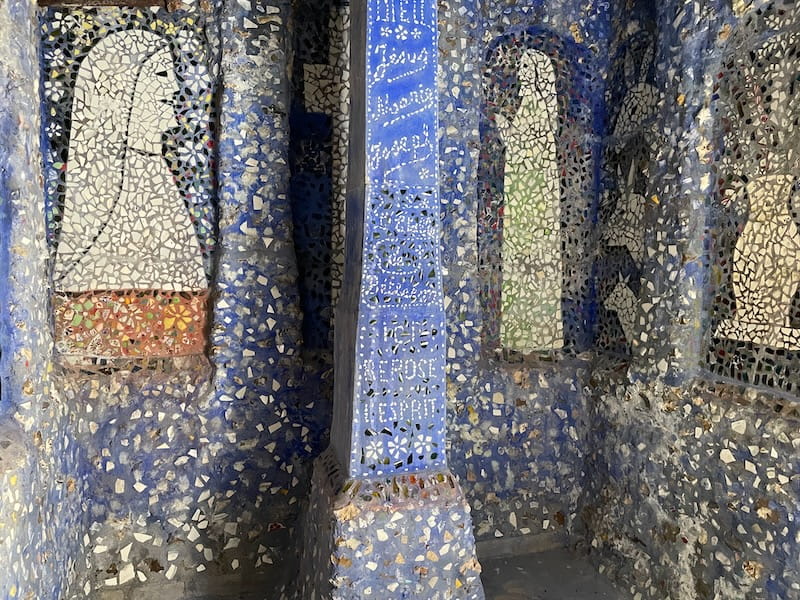 A view of the chapel of the Maison Picassiette, one of Isidore's outdoor creations ©OffbeatFrance/Leyla Alyanak
A view of the chapel of the Maison Picassiette, one of Isidore's outdoor creations ©OffbeatFrance/Leyla AlyanakClearly, his best work was closest to the house.
Given his poorer health later in life, his final pieces were not as fine as his earlier ones. Today’s garden is filled with flowers, but the frescoes on the walls have faded. Still, a bit like the rural countryside Isidore once roamed, this tiny flowered island makes us forget there's a street just over the garden wall.
His source of inspiration
Isidore’s work has often puzzled admirers. How did a man with such a humble background and very little education not only conceive these works of art but produce them as well?
Plenty of professionals have tried to second-guess or analyze what pushed Isidore so far from his origins. He’s been called a spontaneous architect. He’s been called resentful about his life, and his art a reaction to that resentment.
Some say he wanted to embellish life, or that he dreamed of escape to places he had created with mosaics. He may have simply wanted to celebrate his faith through the many examples of Chartres Cathedral you’ll find throughout the house. Or, he may have been expressing his love for his wife, given the many portraits of her scattered throughout the house.
Some family members see an even simpler answer: his ideas came from nightmares.
Whatever their source, the mystery remains of how a poorly educated, solitary and modest man became an architect, builder, painter and mosaicist on a lifetime artistic journey…
In the end, the “how” or “why” don’t matter. What counts is the wonder we feel when we enter this spectacular universe which, somehow, was squeezed from Raymond Isidore’s mind.
How to visit the Maison Picassiette
Getting to Chartres from Paris is simple by train, most of them from Montparnasse station but a few from Austerlitz as well. The journey can take as little as an hour, or about 1hr15 on average. You can check schedules and prices here.
From the Mediathèque bus stop, you can ride directly to the Picassiette stop. I took the #4, but you can also ride the #6 or #8 (please do check first, since routes change). The stop is called Picassiette, but keep an eye out because you’ll have to ring for it.
Then cross the street and walk uphill along the small Rue du Repos. On your right, at #22, a little path (you’ll see some mosaics of broken glass on the ground indicating you’re in the right place) takes you to the house.
You can also walk from downtown for a healthy half-hour stroll. If you’re driving, you’ll probably find some spaces along the Rue du Repos.
Once you get to the Maison Picassiette, a few rules are important to know: it’s delicate, after all, so avoid touching things. Don’t lean against walls, and don’t sit on the chairs, however tempting!
Before you go…
Raymond Isidore was to some extent obsessed with Chartres Cathedral, possibly because of his youthful experience.
We, on the other hand, are obsessed by its beauty, and by the stained glass windows which rank among the best preserved specimens from the medieval era.
According to UNESCO, under which the cathedral is protected, "Chartres Cathedral marks the high point of French Gothic art."
If you love the Gothic style, next time you head to Normandy, make sure you explore Rouen Cathedral, another jewel of its time.

